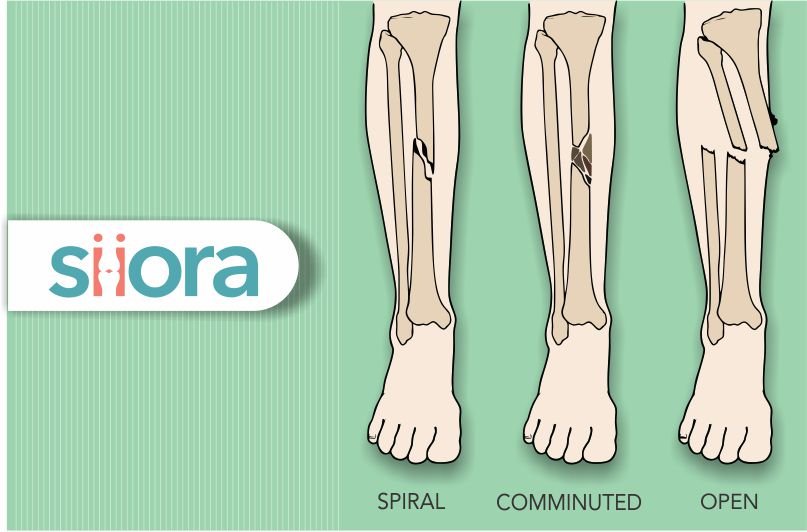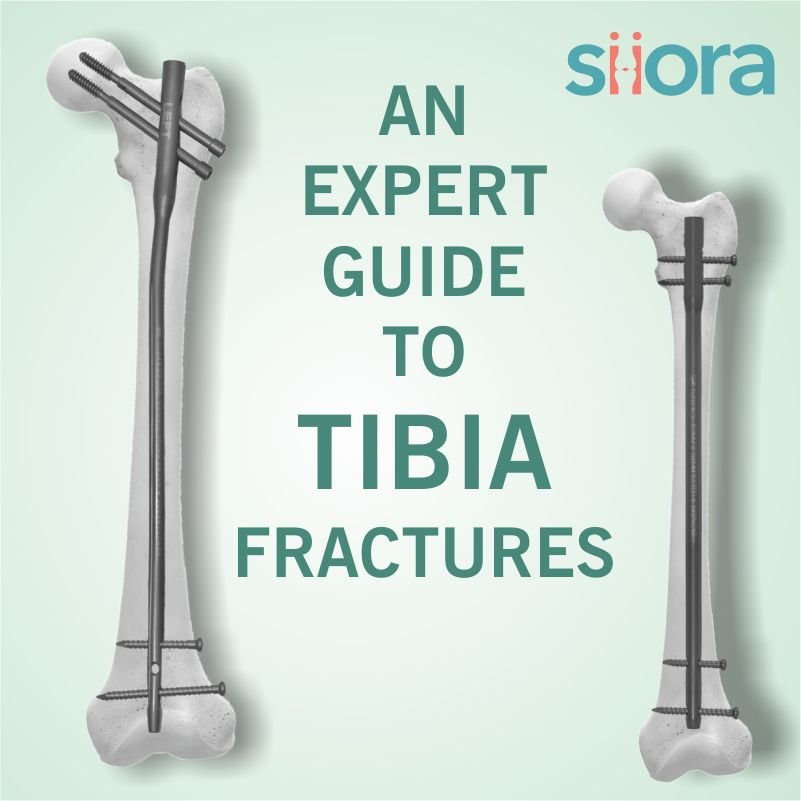The tibia is a long bone that is present in our lower leg between the knee and the foot along with its companion fibula. So, tibia fractures are the break in the shinbone. Being in the lower extremity, fractures in the tibia are common and they often occur because of trauma or repetitive stress on the bone. In this post, we will see tibia fractures along with their symptoms and treatment. Let us start with a brief introduction to the condition.
What Are Tibia Fractures?
According to the AAOS, the tibia is a long bone in the body that gets fractured the most. A fracture in the tibia is a break or crack anywhere in the bone. Tibia, also known as the shinbone, is one of the two bones that forms our lower leg. It is the largest of the two. The other one is the fibula.
The tibia plays a vital role in the proper functioning of knee and ankle joints. Besides this, it also supports most of our body’s weight.
When the tibia breaks, there may be a chance of damage to nearby tissues including muscles or ligaments. The severity of the fracture will decide whether the person may be able to put weight on the injured leg or not. Similarly, the healing will depend on the severity of the break.

What Are the Types of Tibia Fractures?
The type and severity of tibia fracture depend on its cause. Here are some of the common types of fractures in the Tibia:
Stable Tibia Fracture
Stable fractures of the tibia involve a crack or break in the bone however, the bone stays intact in its normal position. They are also known as non-displaced fractures as the broken bone fragments maintain their correct position. Such fractures heal with immobilization and pain medication. No surgery is needed for such fractures.
Displaced Tibia Fractures
Displaced fractures of the tibia bone are those in which the bone fragment moves out of its alignment after breaking. These fractures in the tibia often require surgery for treatment. ORIF is the procedure that orthopedic surgeons perform to correct displaced tibia fractures.
Stress Tibia Fractures
Stress fractures are also called hairline fractures. These are the types of breaks that often occur because of overuse of the tibia. Here, the cracks in the bone are small and often do not cause any symptoms in the early stages. This makes stress fractures hard to diagnose.
Spiral Tibia Fractures
Spiral tibial fractures occur because of a twisting movement.
Comminuted Tibia Fractures
Comminuted tibia fractures are severe, and they often contain more than two pieces of broken bone pieces. These fractures often require surgery to realign the fracture.
What Are the Causes of Tibia Fractures?
Trauma is the commonest cause of fractures in the tibia. Here are some of the causes of fractures in the tibia:
High-Intensity Collisions
High-energy collisions occur because of automobile accidents like car crashes and motorcycle accidents. These fractures are always severe. Tibia fractures that occur because of high-intensity collisions are often displaced and comminuted. Surgery is a must for tibia fractures that occur because of car crashes or bike accidents.
Falls
The tibia can also break in those who fall from a significant height, especially on a hard surface. Falls often result in tibia fractures in the elderly. Besides this, athletes are also prone to fractures because of falls.
Health Conditions
People suffering from osteoporosis are also prone to breaking their tibia. The cause in them may not be significant as the bone may break while running, jumping, or just lifting heavy weights. Besides this, people suffering from type 2 diabetes are also at risk of fractures.
Twisting Movements
Twisting motions often result in spiral fractures and they are common in people who do snowboarding or skiing. These injuries are also common in contact sports.
Above all, the tibia can also break because of low-energy collisions, especially when they are accompanied by a twisting force.
What Are the Symptoms of Tibia Fractures?
A fracture is a painful injury, and the intensity of the pain depends on its cause. Hence, pain is obvious when the tibia breaks. Here are some of the common signs and symptoms of tibia fractures:
- Intense pain in the lower leg
- Inability to stand, walk, or run
- A feeling of numbness or tingling in the foot
- Difficulty while bearing weight on the injured leg
- Deformity in the lower leg depending on the location of the break
- In the case of open fractures, the bone may protrude out of the skin
- Reduced range of motion of the knee
- Swelling at the injury site
- Bruising or discoloration around the injured leg
What is the Diagnosis for Tibia Fractures?
An orthopedic specialist is the best person for the diagnosis of fractures in the tibia. Thus, if you visit a general physician, he may refer you to an orthopedic if he suspects a fracture.
The diagnosis of shinbone fractures often requires both physical examination and imaging tests. During the physical examination, the healthcare service provider will ask for the symptoms that you experience. Besides this, he will also look after the visible signs on the injured leg which may include swelling, bruising, discoloration, or deformity. The orthopedic specialist may also ask if any specific injury has resulted in such a problem.
After a physical examination, the orthopedic specialist will order imaging tests and they may include:
- X-rays
- CT scan
- Bone scan
- MRI scan
What is the Treatment for Tibia Fractures?
The severity of the fracture will decide the type of treatment. Both non-surgical and surgical treatments are available. Let us have a look.
Non-Surgical Treatments
Mild fractures or we can say non-displaced fractures can be best treated with the application of a cast. This is to immobilize the fracture until it heals. In some cases, functional braces are applied. They allow some movement of the leg.
Analgesics and/or non-steroidal anti-inflammatory drugs (NSAIDs) are given to manage pain and inflammation. Above all, physiotherapy, splints, and at-home exercises are suggested to regain strength and range of motion.
Surgery
The most common surgical procedure that orthopedic surgeons prefer is open reduction and internal fixation (ORIF). This surgery is best for the treatment of displaced fractures. It involves the use of orthopedic plates, bone screws, and rods to stabilize the fracture. The surgeon may also apply a cast following the surgery for immobilization.
External fixation is the option in severe fractures, especially comminuted or open fractures where the primary focus is on treating life-threatening conditions at first caused by the accident. Here, a strong metal frame holds the fracture from outside the body which is stabilized with pins and wires from the inside.
Even after surgery, physical therapy and at-home exercises play a vital role in ensuring a better and quicker recovery.
Siora Surgicals Pvt. Ltd. is an experienced orthopedic implant manufacturer in India with over 3 decades in the industry. The company manufactures hundreds of different types of trauma implants using medical-grade stainless steel and titanium. Siora is also a renowned OEM/contract manufacturing service provider across the globe. Besides this, the company is also a regular participant at the Florida International Medical Expo (FIME) in Miami.







